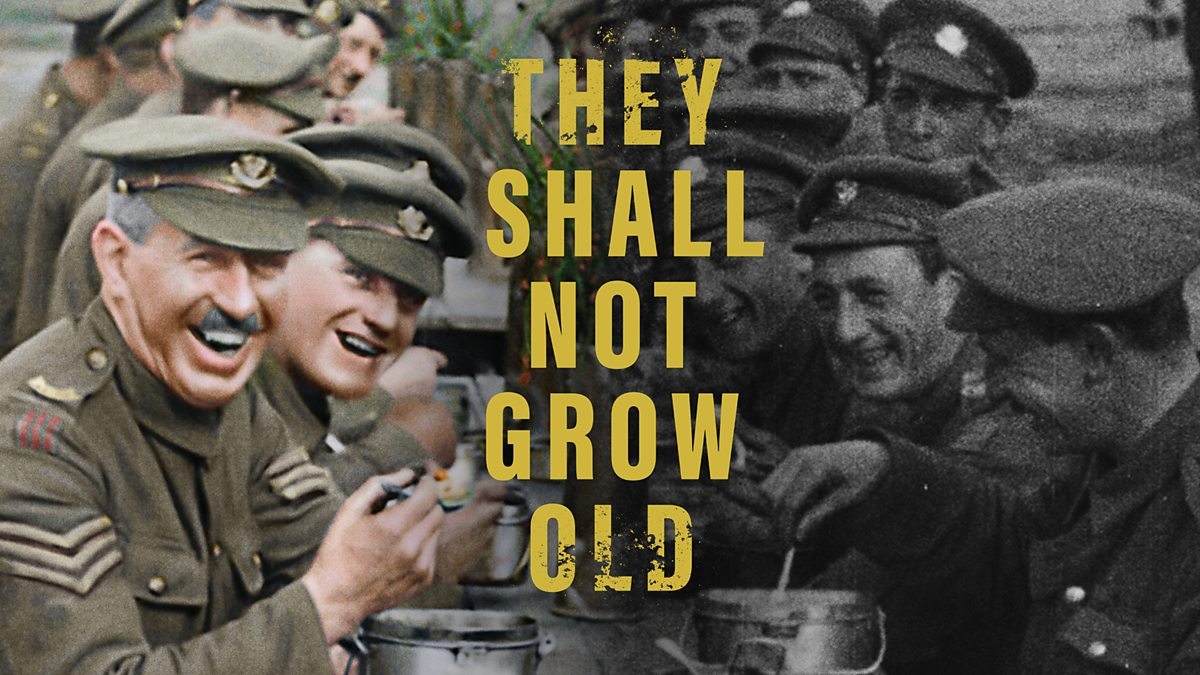
On Sunday, Lisa and I went to see They Shall Not Grow Old, Peter Jackson's stunning new documentary film about the First World War.
Jacxson, who is best known known as the director, writer, and producer of the Lord of the Rings trilogy (2001–03) and the Hobbit trilogy (2012–14), both of which are adapted from the novels of the same name by J. R. R. Tolkien.is an interesting choice to do a documentary.
He was commissined by the Imperial War Museum in Britain to created the documentary as a commemorative for the 100th anniversary of the end of World War I (1914-1918). As such, he was given complete access to the War Museum's more than 100 hours of archival film.
Filmmaking itself was in its infancy in 1914-18. Cameras were primitive, hand-cranked affairs, but the footge that surives, albeit in bad shape is incredibly intimate and real. Photographers dragged their giant apparatus onto the battlefileds and into the trenches
Jackson, to his credit, approached the commission with the same kind of intensity and attention to detail that he brings to his commercial ventures, and it shows.
Working with state of the art digital production houses in New Zealand, he restored the original films, and then went much further - digitizing, enhancing and vastly improving the images. Then he colorized them, but not in a way we are used to. The process he used, and his meticulous atteniton to detail - returning to battlefields and locations shot 100 years ago and matching the greens of the grass, the browns and reds of the dirt; finding original uniforms from that era and matching perfectly the colors of the clothing, the hats, the badges is just an astonishing achievement.
The result is that the old acrhival footage looks completely modren and contemporary.
As a result, the men (and it is mostly men) that you encounter seem alive and current, as if you could meet them the on the street. He also took meticulous care to reproduce the audio track - finding local accents in Britain to match the origins of those filmed, creating nat sound (the film was, of course, silent) that perfectly matched the sounds you are watching - firing the same kind of gun, running the same model of car, and so on.
Finally, in the 1960s, The BBC shot hundreds of hours of interviews with surviving veterans of the First World War. He used those actual interviews to create the soundtrack for the film. Then, he again matched the subjects they were remembering for The Beeb to the archival footage that he had.
Finally, this film is graphic in the extreme. The early 20th century filmmakers dragged their giant and ungainly cameras into the trenches as the war was progressing. There are mud filled trenches, dead bodies, body parts, rats, filth - all just as it was.
The combination of the corrected footage, the remarkable intimacy of the shooting, the sound, the voices, the meticulous attention to detail made me feel very much as though i was right there in the trenches, enduring the unendurable. The men who were captured on film were real and felt like contemporaries.
The horror of war has never been so well transmitted.
This a 'must see' film.


